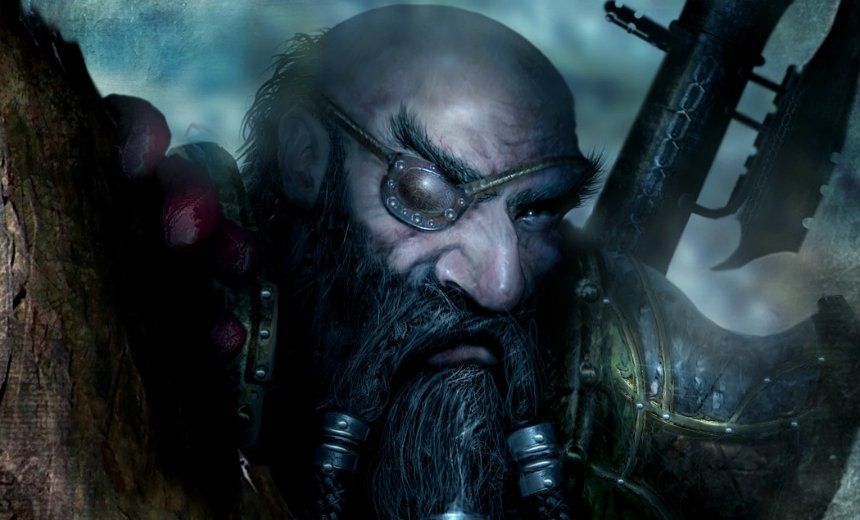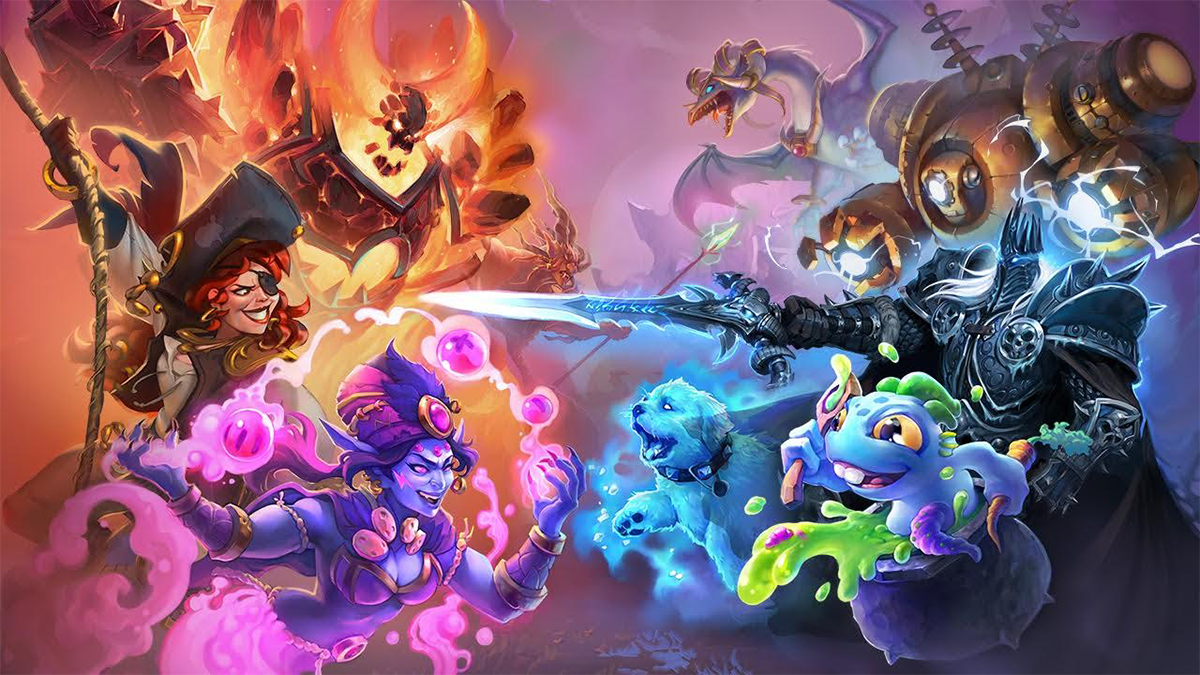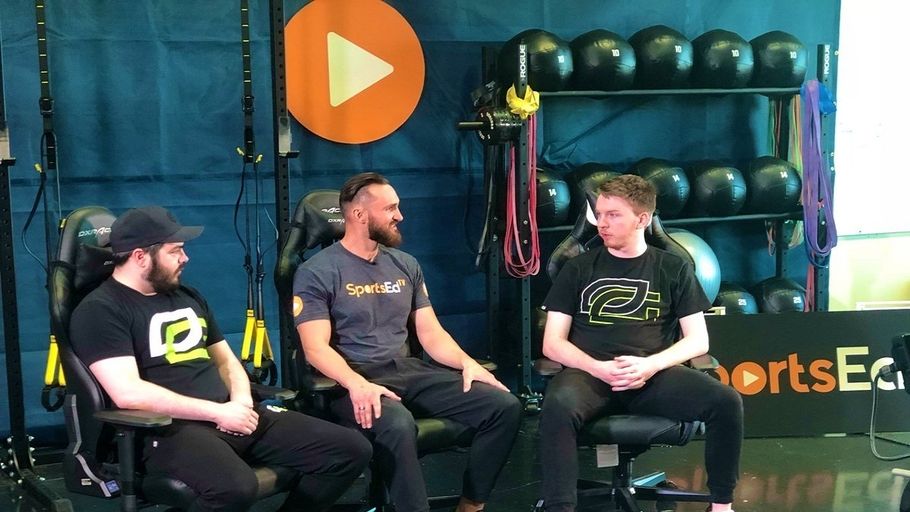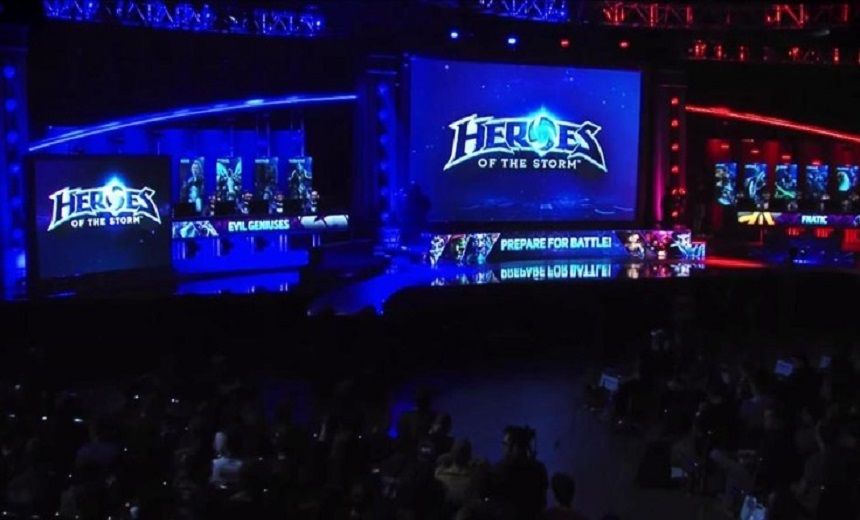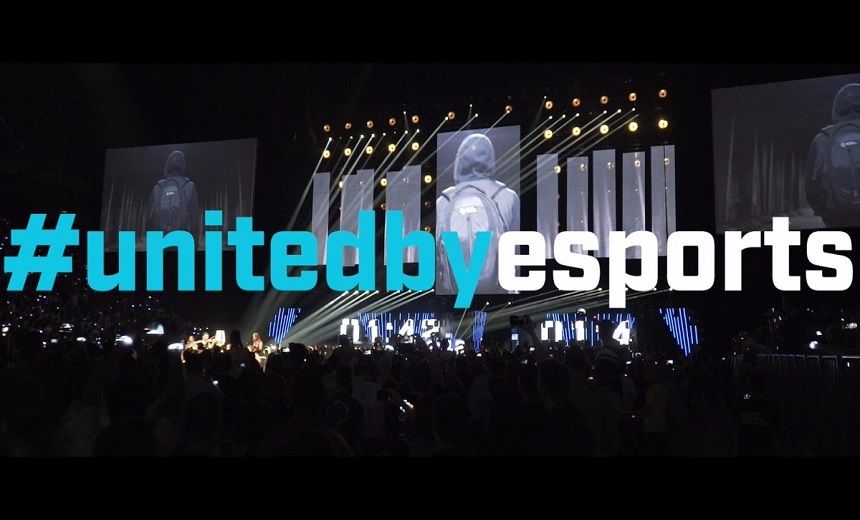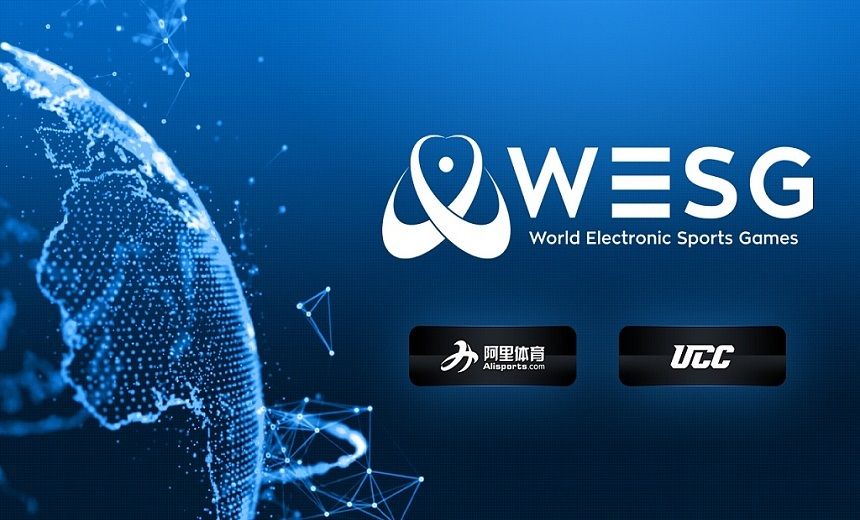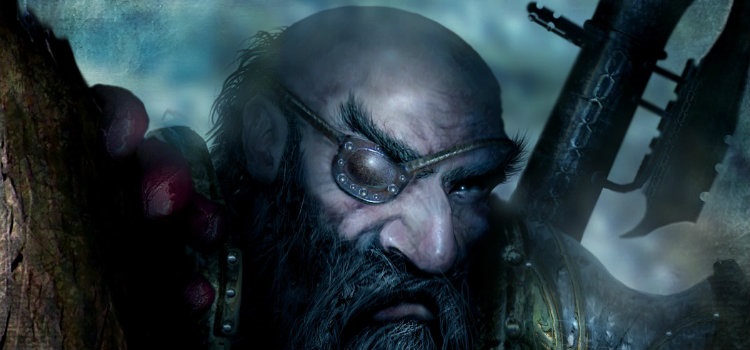
Greetings friends. I am Sumadin, new editor for GosuGamers Hearthstone, avid paladin player in WoW and Hearthstone alike and just a huge Blizzard fanboy in general. I also got almost a decade worth of history with the TCG Yu-Gi-Oh. Today I would like to go over one of the toughest subjects of any CCG: Cards that are problematic for the game.
In this article I would like to go over the most prominent ones and go in depth with why I have chosen them as the cards most likely to cause problems in the future. I will also go in depth on what the problems I see occurring with these cards are.
Now take note this is a list about cards that affect the overall gameplay of Hearthstone and will keep doing so. It is not just about cards that are currently considered imbalanced. You won't find [card]Dr Boom[/card] or [card]Kill Command[/card] on this list even if the community dislikes them right now. Instead this is about those cards who are mostly to cause problems in the long run and probably will need a change eventually.
5. [card]Savage Roar[/card]
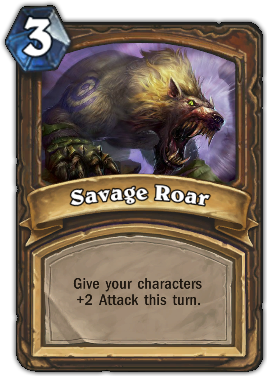 Generally speaking when it comes to CCGs the likes of Hearthstone, the most dangerous effect you can put on any card is overly excessive instant damage. It is these cards that give birth to eventual OTK combos, and it is an area where if the devs screw up, it usually stays screwed up until the problem is aggressively fixed, usually by banning the cards in question.
Generally speaking when it comes to CCGs the likes of Hearthstone, the most dangerous effect you can put on any card is overly excessive instant damage. It is these cards that give birth to eventual OTK combos, and it is an area where if the devs screw up, it usually stays screwed up until the problem is aggressively fixed, usually by banning the cards in question.
Hearthstone is no stranger to this and indeed a lot of the changes made in 2014 were to address cards whose damage output was not entirely in line with their mana cost.
[card]Savage Roar[/card] is one such card with very high instant damage. For an area spell, its low ceiling is incredible, doing 4 damage for 3 mana even with just a single minion on the board. “Same” as [card]Shadow Bolt[/card], though the different nature of the spells still makes this more than fair. It can also be compared to the spell [card]Bloodlust[/card]: [card]Savage Roar[/card] still does the same damage when 2 minions are present, even if Bloodlust cost 2 more. Now understand that even this comparison is still not completely fair, as Bloodlust is a Shaman-spell which is a class with a token hero power where as Savage Roar belongs to druid, a class primarily focused on ramping up single big minions.
"The most dangerous effect you can put on any card is excessive instant damage."
The problematic nature in Savage Roar doesn't actually lie in the infamous [card]Force of Nature[/card]/Savage Roar combo. 14 damage is a surprisingly acceptable for 9 mana, especially when it has to respect eventual taunts and leaves no board afterwards. Rather, it is the raw potential of Savage Roar and the fact that it scales so well with minions already on the board like [card]Shade of Naxxramas[/card] that is most likely going to cause problems in the future should druids get access to a more consistent rush-based strategy.
In the past we have already seen some attempts at aggressive Druid decks focusing on utilizing Savage Roar together with minions like [card]Haunted Creeper[/card] and [card]Echoing Ooze[/card] to get very high damage in early. While these decks have fallen out of the meta, they are a good example of the kind of decks potentially to come that abuse this.
4. [card]Doomguard[/card]
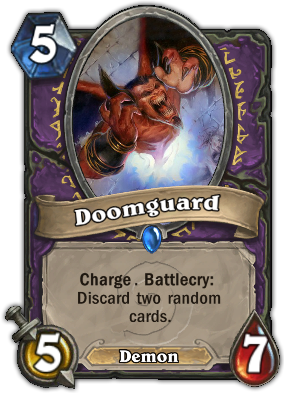 Warlocks have had their fair share of anti-fans in Hearthstone's history and a lot of it comes down to the fact that they have been one of the most prominent rush classes with the deck known as Zoolock.
Warlocks have had their fair share of anti-fans in Hearthstone's history and a lot of it comes down to the fact that they have been one of the most prominent rush classes with the deck known as Zoolock.
One of the biggest enablers of modern zoolock is the amazing card [card]Doomguard[/card]. On paper, its raw stats are complete and utterly bonkers. Being a 5/7 with charge, it is closer to a 7 drop than a 5 drop. To balance this out, [card]Doomguard[/card] has the drawback of forcing you to discard two cards on Battlecry.
There are two gaping problems with this design. First of all, if there is anything [card]Leeroy Jenkins[/card] taught us, it is that charge with drawback is not a very feasible combination balance-wise. Once the enemy hero is dead, no drawback matters. We also know this from [card]Arcane Golem[/card].
But second and much more apparent is the fact that the cost that supposedly balances out [card]Doomguard[/card] is not fully mandatory. Indeed most of the time he is played, it is circumvented to an extent. All that's required to bypass it is that [card]Doomguard[/card] is the last or second-last card in the warlocks hand and this is where the entire balance of this card breaks down.
"Once the enemy hero is dead, no drawback matters."
This principle has been causing problems elsewhere. [card]Soulfire[/card] was nerfed to one mana simply because the drawback from it was not relevant. [card]Succubus[/card] utilizes the same mechanic, however its stat distribution is so bad it still trades evenly with most minions and spells on the same mana cost. [card]Doomguard[/card] however trades favorably against almost all minions on his mana cost and most of the time he does a ton of damage to the hero while doing so. This is very likely to keep causing a lot of problems in the long run.
3. [card]Alexstrasza[/card]
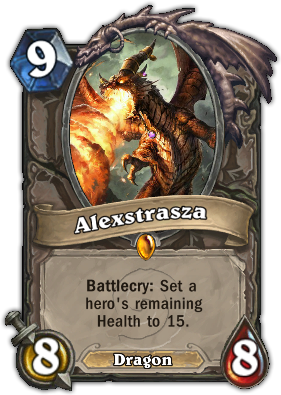 Alexstrasza's track record up to this point is impressive and should already be a cause for an alarm for Blizzard. She is single-handedly responsible for the nerf of the card [card]Charge[/card] and at least partially responsible for the nerfs of the old Freeze Mage. She was also banned from three of the heroic encounters in Naxxaramas, because her effect was just too potent against some of the more health-intensive battles.
Alexstrasza's track record up to this point is impressive and should already be a cause for an alarm for Blizzard. She is single-handedly responsible for the nerf of the card [card]Charge[/card] and at least partially responsible for the nerfs of the old Freeze Mage. She was also banned from three of the heroic encounters in Naxxaramas, because her effect was just too potent against some of the more health-intensive battles.
Now with Blackrock we saw that Blizzard's current solution to that issue is to have half the health of the bosses on heroic be in armor instead of health which isn't affected by Alexstrasza. While this seems to work for now, it still looks more like a short-term band-aid solution to something that in any other game would simply be removed. I doubt Blizzard care too much about the elegance in the design of the Hearthstone single-player to have an issue with this though. That said, Alexstrasza also brings some serious issues to Hearthstone multiplayer.
The thing about Alexstrasza is that while her effect is incredibly offensive, it actually prolongs games. She promotes stalling, and the reward is incredible. Up to 15 points the opponents life gone from just a single card, as long as you haven’t done anything to the enemy hero beforehand.
"The issue with Alexstrasza is not the effect she applies, but rather the playstyle she promotes."
The issue with Alexstrasza is not the effect she applies, but rather the effect she has on the playstyle of decks that use her. No damage done to the hero prior to [card]Alexstrasza[/card] being played matters. Nothing needs to be done at all really. All the player needs to do is make sure he/she doesn't die up until the point where Alexstrasza can be played. Once that is done it is rather easy to finish the game.
This leads to stale and drawn out games that focus much less on interacting on the field and more on delaying the opponent. We see this both with freeze mage but also with most versions of control warrior. And it is generally the kinds of games that should not be encouraged.
2. [card]Sylvanas Windrunner[/card]
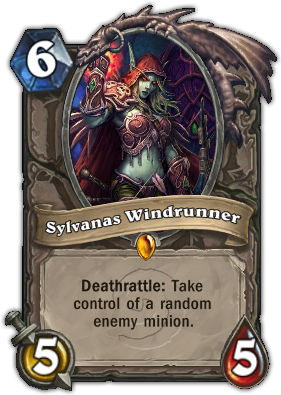 In general, switching control of minions seems to be a mechanic whose power Blizzard have had troubles keeping in check. [card]Mind Control[/card] for Priests started off as 8 mana and Sylvanas herself was only 5 mana half a year into beta. We dodged alpha Mind Control Tech, but it too signals some questionable understanding of the power level of this mechanic.
In general, switching control of minions seems to be a mechanic whose power Blizzard have had troubles keeping in check. [card]Mind Control[/card] for Priests started off as 8 mana and Sylvanas herself was only 5 mana half a year into beta. We dodged alpha Mind Control Tech, but it too signals some questionable understanding of the power level of this mechanic.
Today, even as a 6-drop Sylvanas is one of the most consistently picked cards for constructed, and it really all comes down to the nature of her effect. It is incredibly strong as its total tempogain is equal to twice the value of the minion stolen. In other words if you steal an 8 mana minion like Ragnaros then your overall gain is 16 mana worth of tempo.
There are a couple of conclusions that can be drawn from this relationship. One of them is that as Sylvanas is now, she will likely never leave the meta. Even as the gradual power creep in Hearthstone phases out other current cards, it will only mean that Sylvanas will have even stronger targets to steal.
This might not sound too bad initially but in CCGs it is a very consistent trait that the worst designed cards are the ones who not only are so strong they don't fall out of use over time but also gets progressively stronger during that time.
“But her effect is random, and sometimes it whiffs,” I imagine hearing a ton of people arguing. There is some validity to those arguments, but there are also multiple problems with that stance. First of all, if the trends we see now are any clue, then it will only be harder to keep a board of weak minions alive. The options for soft board clears have only grown in GvG and Blackrock and we already had some good ones before, such as [card]Shadowflame[/card] which, granted, also deals strong damage to the stolen target.
"Sylvanas will likely never leave the meta. Even as the gradual power creep in Hearthstone phases out other current cards, it will only mean that Sylvanas will have even stronger targets to steal."
The second problem is that no card can be balanced around its worst case scenario. If [card]Deathwing[/card] was balanced around the assumption that he would only destroy one minion and then be [card]Big Game Hunter[/card]'d, then he would not require the discards and could probably only cost 9. When this is not the case it is because Deathwing has much better scenarios.
Sylvanas is similar. If the assumption was that she always dies on an empty field or only steals a token then she could probably stay at 5 mana. But even her average results are much better than this, and her potential results are so huge the most player are forced to go out of their way to play around her. Even after the nerf.
There is of course a couple of cards that can straight up counter her effect. And let me move on to one of the most prominent ones right now:
1. [card]Ironbeak Owl[/card]
 I wanted to say silence in general however to stay consistent I am just going to pick the worst offender in the lot. Ironbeak Owl is the card most likely to keep causing problems in the future.
I wanted to say silence in general however to stay consistent I am just going to pick the worst offender in the lot. Ironbeak Owl is the card most likely to keep causing problems in the future.
Silence is problematic. As a mechanic it is highly reductive, in the sense that it makes less stuff happen. This might seem vague, as there are many mechanics that fall under this definition. Simple monster removal is also a type of mechanic that is reductive. You take a card of your own and uses it solely to remove a card of your opponent. However the biggest case for the problematic nature of silence is its sheer versatility. Where as spells are limited by power/cost/opportunity, silence is almost universal and the number of viable targets for silence in the meta is growing rapidly.
You will find it very hard to find a removal card, or any card really, that works universally. [card]Fireball[/card] can eradicate a [card]Chillwind Yeti[/card] but is almost useless against a [card]Piloted Shredder[/card]. Even the druid spell [card]Recycle[/card] which ignores deathrattles and death-related effects like [card]Redemption[/card] still falls short against a [card]Spectral Knight[/card]. The old [card version=1003140]Tinkmaster Overspark[/card] was an example of a removal card that worked universally, as leaving a minion as a vanilla 1/1 is practically the same as a full removal. It was a 50/50, true, but worst case scenario it would still silence the minion and possibly reduce its stats. And as some people might remember it really wasn't that good of a card to have in Hearthstone.
"The biggest case for the problematic nature of silence is its sheer versatility and highly reductive nature."
Raw silence however is getting to that point where its use can be applied to everything. There certainly are cards in the meta that aren't affected by it or not as much, but they are falling in number and giving room to cards with high value effects like the Shredders. For aggressive decks it is also one of the most efficient ways of neutralizing taunts, more often than not better than [card]The Black Knight[/card] who is supposed to be specialized in that.
There have been some talks about the usage of Ironbeak being a cyclical thing and that we would see a decline, especially after [card]Undertaker[/card] was nerfed. That also seemed to be the case after the launch GvG, but this have to be taken with a grain of salt as the most prominent deck at the time was mech mage, one of the few decks almost unaffected by silence and with one of the most efficient answers to Ironbeak owl in the form of [card]Goblin Blastmage[/card]. But as the meta settled away from Mech Mage, it is clear that Ironbeak is still as potent as ever playing a big role in the infamous Face Hunter.
In general I would also like to contest the idea of Hearthstone needing counter cards as good as Ironbeak owl. There is one strict rule about counter cards, in that they will NEVER stop cards which are truly overpowered from use. They might give a player a fighting chance against them but that is only ever as consistent as your chance of drawing said card in the right situation. Silence never stopped Undertaker. It didn't stop [card version=1003140]Twilight Drake[/card] back when it gained both health and attack and neither did it eliminate [card]Sylvanas Windrunner[/card].
"Blizzard does seem to be aware of the issue and we haven't got any new silence cards since launch."
The real problem though is all the things it successfully stops. External buffs like [card]Blessing of Kings[/card] are, with small exceptions, extinct in constructed because the value gained from silencing them are just too huge. A minion like [card]Lightspawn[/card] that has some very interesting interactions but isn't “unfair” otherwise is also an example of a card killed by even the possibility of silence. This is silence's true reductive nature.
Blizzard does seem to be aware of the issue though. All the way since launch we haven’t got any new silence cards at all except for Naxxramas where all we got was [card]Wailing Soul[/card], a silence that cannot be used offensively and thus really can't be compared at all.
This is assuring as silence is the kind of mechanic that, if left unchecked, can very easily devolve Hearthstone from a game about doing awesome stuff to a game about making sure your opponent isn't doing anything awesome. As someone who have seen this happen before, it is not something I want Hearthstone to repeat.
More on GosuGamers Hearthstone:

